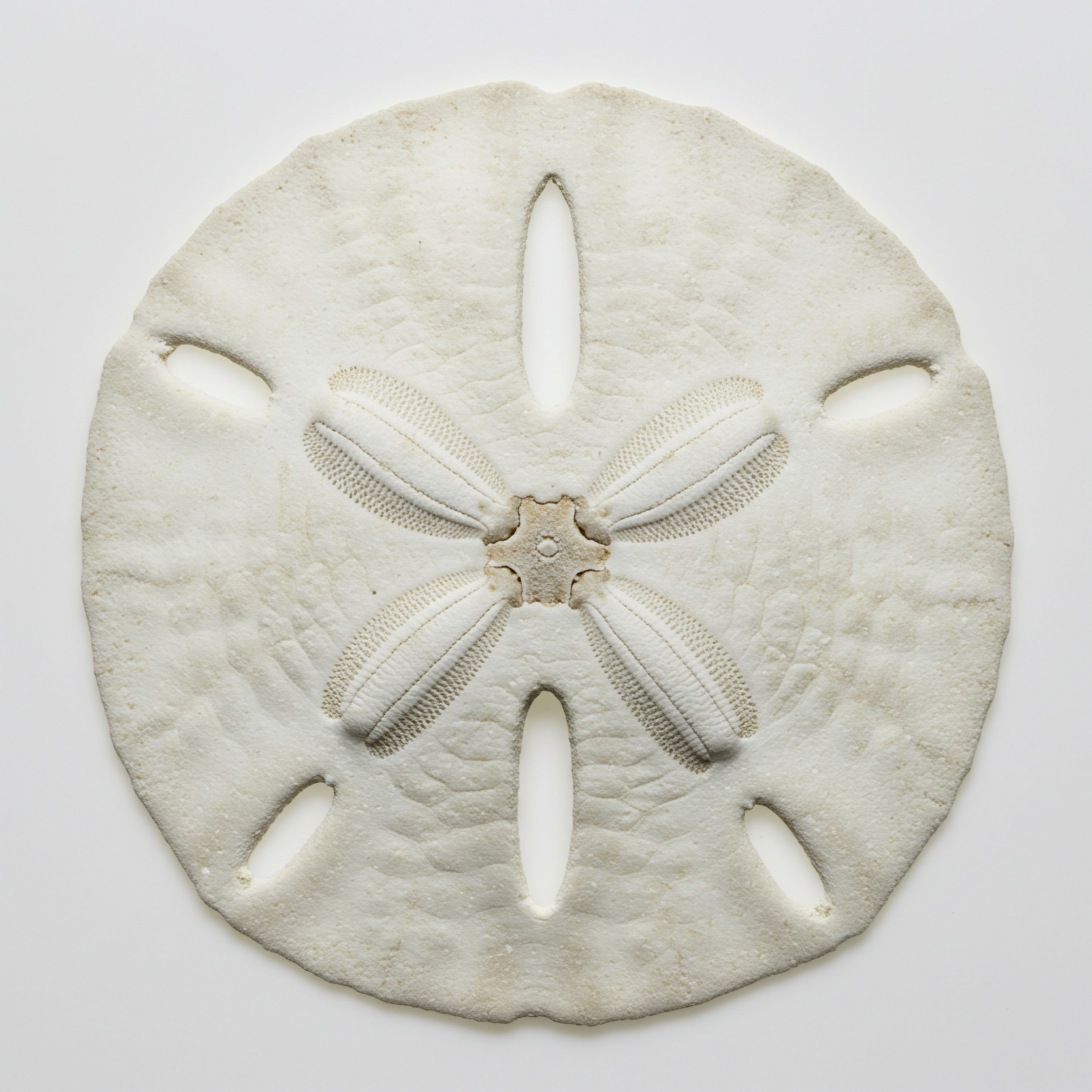

Fundamentals
You have committed to a new way of living. The decision was made after weeks, perhaps months, of feeling a subtle decline in your vitality ∞ a sense of being less resilient, a physical slowing that your mind refuses to accept. You have changed your diet, incorporated consistent exercise, and prioritized sleep.
Now, you wait. The question that occupies your thoughts is a deeply personal one ∞ When will I feel the results? Specifically, when will the vast, silent network of my blood vessels begin to heal? The answer begins not in months, but in moments. The first victories in vascular health are won within hours and days, at a microscopic level, long before you might notice a change on the scale or in the mirror.
Your vascular system is composed of more than 60,000 miles of blood vessels, each lined with a delicate, single-cell-thick layer called the endothelium. Think of this layer as the most sophisticated biological surface in your body, a dynamic gatekeeper that controls what passes from your blood to your tissues.
A healthy endothelium is smooth, flexible, and actively anti-inflammatory. It produces a critical signaling molecule, nitric oxide (NO), which instructs the smooth muscles of your arteries to relax, allowing blood to flow freely. When the endothelium is damaged by factors like high blood sugar, inflammation, or oxidative stress, it becomes stiff, sticky, and inflamed. This state, known as endothelial dysfunction, is the foundational step in the development of atherosclerosis.
The initial improvements in vascular health from lifestyle changes occur as functional enhancements in the endothelial lining, often within days of implementation.
Lifestyle interventions make their first impact here, on the function of the endothelium. For instance, engaging in moderate aerobic exercise triggers an immediate increase in blood flow. This physical force, called shear stress, is a powerful signal to the endothelial cells to produce more nitric oxide.
This response can be measured, and improvements in what is called flow-mediated dilation (a direct assessment of endothelial function) can be seen in as little as a few weeks of consistent activity. Similarly, removing inflammatory foods from your diet, such as those high in saturated fats and refined sugars, reduces the oxidative burden on the endothelium almost immediately.
This allows the cells to shift from a state of defense to one of repair and maintenance. These are not structural changes yet; they are functional restorations. The system is beginning to work as it was designed, creating the necessary environment for deeper healing to occur.

The Cellular Architects of Repair
Your body has a remarkable capacity for self-repair, mediated by a specialized population of cells known as Endothelial Progenitor Cells (EPCs). These cells are produced in the bone marrow and circulate in the bloodstream, acting like a biological repair crew that seeks out areas of endothelial damage, adheres to the vessel wall, and transforms into mature endothelial cells to patch the injury. The number and functional capacity of your circulating EPCs are direct indicators of your vascular regenerative potential.
Lifestyle choices have a profound and rapid influence on these cellular architects. Smoking, for example, dramatically suppresses both the number and activity of EPCs, while cessation is one of the most effective ways to boost them.
Research has demonstrated that a program of moderate aerobic exercise, such as walking or jogging, can double the number of circulating EPCs in sedentary men over a period of three months. Dietary choices also play a key role. Diets rich in antioxidants and polyphenols, found in foods like berries, onions, and green tea, have been shown to increase EPC counts.
These initial changes, happening silently within your bone marrow and bloodstream, are the literal building blocks of long-term vascular restoration. The timeline for seeing these improvements is not a single point but a cascade of events, starting with functional recovery and leading to cellular regeneration.


Intermediate
Understanding that vascular repair is a sequence of events allows us to move beyond a generic timeline and ask more precise questions. We can begin to connect specific interventions, from dietary patterns to hormonal optimization protocols, to their distinct roles and timelines in this restorative process.
The journey begins with improving endothelial function and progresses toward structural remodeling of the vessel wall. This requires a systems-based perspective, recognizing that the vascular system is inextricably linked to the endocrine and metabolic systems.
A central antagonist in vascular health is insulin resistance. In a healthy state, insulin signaling in endothelial cells follows two main pathways. One pathway, the phosphatidylinositol 3-kinase (PI3K) pathway, leads to the production of nitric oxide, promoting vasodilation and healthy blood flow. Another pathway, the MAP kinase (MAPK) pathway, promotes the secretion of endothelin-1, a potent vasoconstrictor.
In a state of insulin resistance, the PI3K pathway becomes blunted, impairing nitric oxide production. The MAPK pathway, however, remains active, leading to an imbalance that favors vasoconstriction and inflammation. This creates a self-perpetuating cycle where endothelial dysfunction exacerbates insulin resistance by reducing blood flow and insulin delivery to tissues, which in turn worsens endothelial function.
Breaking this cycle is a primary objective of lifestyle interventions. Dietary changes that stabilize blood glucose and improve insulin sensitivity can begin to restore balance to these signaling pathways within weeks.

How Do Hormones Govern Vascular Timelines?
The endocrine system is a master regulator of vascular health. Hormones like testosterone and estrogen are potent modulators of endothelial function, and their decline with age contributes directly to vascular aging. Optimizing these hormones is a clinical strategy that can significantly influence the timeline of vascular improvement.

Testosterone’s Role in Male Vascular Health
In men, low testosterone (hypogonadism) is strongly associated with endothelial dysfunction and an increased risk for cardiovascular events. Testosterone supports vascular health through several mechanisms, including the stimulation of nitric oxide production and the mobilization of endothelial progenitor cells. When men with diagnosed hypogonadism begin Testosterone Replacement Therapy (TRT), improvements in vascular markers can be observed.
Studies have shown that in men with low testosterone and abnormal endothelial function, TRT can lead to measurable improvements in both reactive hyperemia index (a measure of endothelial vasodilation) and augmentation index (a measure of arterial stiffness) within three to six months. This demonstrates that restoring hormonal balance can directly accelerate the repair processes initiated by diet and exercise.

Estrogen’s Protective Capacity in Women
In women, estrogen is a primary guardian of the endothelium. It enhances the production of nitric oxide, has anti-inflammatory effects, and promotes vascular healing. The decline in estrogen during perimenopause and post-menopause corresponds with an acceleration of vascular aging and an increased incidence of cardiovascular disease.
The expression of estrogen receptors (ERα and ERβ) on endothelial cells is dynamic and changes with age and hormonal status. Thoughtfully applied hormonal therapy in women can help preserve these protective mechanisms. Low-dose testosterone therapy in women, often used alongside progesterone, can also contribute to vascular health, though its mechanisms are still being fully elucidated.
The goal of these protocols is to restore the hormonal signals that maintain the endothelium in a state of health, thereby complementing lifestyle-driven improvements.
Hormonal optimization protocols for both men and women can accelerate vascular repair by directly improving endothelial cell function and reducing arterial stiffness within months.
| Intervention | Initial Functional Response (1-12 Weeks) | Cellular & Structural Response (3-12 Months) |
|---|---|---|
| Aerobic Exercise |
Increased nitric oxide production; improved flow-mediated dilation. |
Doubling of endothelial progenitor cells; decreased arterial stiffness. |
| Dietary Improvement (e.g. Mediterranean Diet) |
Reduced oxidative stress and inflammation; lower circulating oxidized LDL. |
Improved endothelial repair capacity; potential reduction in endothelial senescence. |
| TRT (in Hypogonadal Men) |
Initial improvements in endothelial signaling pathways. |
Measurable improvement in vasodilation and arterial stiffness; increased EPCs. |
| Smoking Cessation |
Rapid reduction in acute oxidative stress and carbon monoxide. |
Significant increase in number and function of endothelial progenitor cells. |


Academic
A deeper examination of the vascular repair timeline requires moving beyond the endothelium itself to the intricate structure that lines its surface ∞ the endothelial glycocalyx. This delicate, gel-like layer, a dense forest of membrane-bound proteoglycans and glycoproteins, is the true interface between the flowing blood and the vessel wall.
Its integrity is paramount for vascular health, and its degradation is a critical, often overlooked, event that precedes and drives endothelial dysfunction. The timeline for improving vascular health is, in many ways, the timeline of restoring the glycocalyx.
The glycocalyx functions as a sophisticated mechanosensor, translating the shear stress of blood flow into the biochemical signal (nitric oxide production) that governs vasodilation. It also acts as a selective barrier, preventing the adhesion of platelets and leukocytes and regulating the passage of molecules like cholesterol into the vessel wall.
Inflammatory states, hyperglycemia, and oxidative stress cause the shedding of the glycocalyx. Enzymes like heparanase become activated and cleave heparan sulfate, a key structural component, while other enzymes degrade hyaluronic acid. This degradation exposes adhesion molecules on the endothelial surface, initiating an inflammatory cascade and rendering the vessel vulnerable. The process of vascular repair, therefore, is fundamentally a process of rebuilding this essential structure.

What Is the Biochemical Process of Glycocalyx Restoration?
Restoring the glycocalyx is an active metabolic process that depends on the availability of specific precursors. The endothelial cells themselves synthesize the core proteins and polysaccharide chains (glycosaminoglycans or GAGs) that form this layer. Lifestyle interventions contribute directly by providing these building blocks and reducing the enzymatic degradation.
- Dietary Precursors ∞ A diet rich in a variety of nutrients supports this synthesis. Glucosamine, for example, is a fundamental building block for GAGs. Antioxidants and anti-inflammatory compounds from plant sources can reduce the activity of the enzymes that degrade the glycocalyx.
- Targeted Supplementation ∞ Clinical research is exploring the use of dietary supplements containing glycocalyx precursors to accelerate repair. Formulations may include high-molecular-weight hyaluronan, heparan sulfate, and other GAGs. Studies in animal models of diabetes have shown that providing these precursors can effectively restore the glycocalyx, leading to subsequent improvements in endothelial function and reductions in arterial stiffness.
- Hormonal and Peptide Influence ∞ The synthesis and maintenance of the glycocalyx are also under hormonal control. Growth hormone (GH), for instance, plays a role in maintaining tissue structure throughout the body. Growth hormone peptide therapies, such as Sermorelin or CJC-1295/Ipamorelin, are designed to stimulate the body’s own production of GH. While direct research on their effect on the glycocalyx is emerging, their known benefits on tissue repair and cardiovascular function suggest a potential role. By improving overall cellular health and reducing inflammation, these peptides may create a more favorable environment for glycocalyx synthesis and preservation.
The restoration timeline can be surprisingly rapid once the injurious stimuli are removed and the necessary precursors are provided. In preclinical models of sepsis, where glycocalyx degradation is acute and severe, targeted therapies have been shown to restore glycocalyx integrity within hours.
While the damage from chronic lifestyle factors is more insidious, this demonstrates the dynamic nature of the structure. Measurable improvements in glycocalyx thickness and function can likely be achieved within a period of weeks to months, preceding and enabling the more profound, long-term structural improvements in vascular health.
The timeline of vascular healing is fundamentally tied to the degradation and restoration cycle of the endothelial glycocalyx, a process that can be accelerated with targeted nutritional and peptide-based strategies.
| Component | Primary Function | Factors Causing Degradation | Factors Supporting Restoration |
|---|---|---|---|
| Proteoglycans (e.g. Syndecans, Glypicans) |
Core proteins that anchor GAG chains to the cell membrane. |
Inflammatory cytokines (e.g. TNF-α), enzymatic cleavage (proteases). |
Healthy gene expression, low-inflammation environment. |
| Glycosaminoglycans (GAGs) (e.g. Heparan Sulfate, Hyaluronan) |
Form the bulk of the gel layer; bind growth factors; responsible for negative charge. |
Enzymes (Heparanase, Hyaluronidase), hyperglycemia, oxidative stress. |
Availability of precursors (glucosamine), reduced enzymatic activity. |
| Glycoproteins (e.g. Selectins, Integrins) |
Mediate cell adhesion and signaling. |
Shedding during acute inflammation, high shear stress. |
Stable blood flow, anti-inflammatory signals. |
| Associated Plasma Proteins (e.g. Albumin, SOD) |
Incorporate into the matrix, contributing to barrier function and antioxidant capacity. |
Hemorrhagic shock, severe illness (sepsis). |
Adequate plasma protein levels, antioxidant support. |

References
- Man, Andy W.C. et al. “Impact of Lifestyles (Diet and Exercise) on Vascular Health ∞ Oxidative Stress and Endothelial Function.” Oxidative Medicine and Cellular Longevity, vol. 2020, 2020.
- Foresta, Carlo, et al. “Testosterone replacement therapy can increase circulating endothelial progenitor cell number in men with late onset hypogonadism.” Andrology, vol. 1, no. 4, 2013, pp. 563-569.
- Gavin, Kathleen M. et al. “Estrogen and the Vascular Endothelium ∞ The Unanswered Questions.” Journal of the Endocrine Society, vol. 6, no. 5, 2022.
- Muniyappa, Ranganath, and Michael J. Quon. “Insulin resistance and endothelial dysfunction ∞ the road map to cardiovascular diseases.” Diabetes, Obesity and Metabolism, vol. 9, no. 3, 2007, pp. 241-258.
- Kim, Chul-Ho, et al. “Cardiovascular effects of growth hormone (GH) treatment on GH-deficient adults ∞ a meta-analysis update.” Heart Failure Reviews, vol. 25, no. 6, 2020, pp. 1023-1033.
- Torres, Luis I. et al. “Resuscitating the Endothelial Glycocalyx in Trauma and Hemorrhagic Shock.” The American Surgeon, vol. 89, no. 6, 2023, pp. 2486-2492.
- Bhatt, Deepak L. et al. “Cardiovascular Safety of Testosterone-Replacement Therapy.” New England Journal of Medicine, vol. 389, no. 2, 2023, pp. 107-117.
- Arnah, Amr, and Michael J. Quon. “A link between low testosterone and cardiovascular disease risk.” American Journal of Physiology-Heart and Circulatory Physiology, vol. 318, no. 3, 2020, pp. H535-H537.
- Arnal, Jean-François, et al. “Estrogen Receptors and Endothelium.” Arteriosclerosis, Thrombosis, and Vascular Biology, vol. 30, no. 8, 2010, pp. 1506-1512.
- Tivesten, Åsa, et al. “Low serum testosterone and mortality in middle-aged men.” The Journal of Clinical Endocrinology & Metabolism, vol. 94, no. 7, 2009, pp. 2482-2488.

Reflection
The information presented here maps the biological sequence of vascular repair, from the immediate functional shifts in your endothelium to the deeper, structural rebuilding of its protective layers. This knowledge transforms the waiting period from a passive state of hope to an active period of understanding.
You can now visualize the processes unfolding within your body as a direct consequence of your daily choices. The journey to reclaiming vitality is personal, and the timeline is your own. The critical question to reflect upon is this ∞ What are the primary forces challenging my vascular system right now?
Is it a metabolic issue rooted in insulin signaling? A hormonal one tied to the natural shifts of aging? Or a chronic inflammatory state driven by lifestyle? Identifying your personal biological context is the first step toward a truly personalized and effective protocol. The power lies in understanding your own intricate system, allowing you to provide precisely what it needs to heal and function without compromise.

Glossary

vascular health

endothelial dysfunction

oxidative stress

endothelial cells

nitric oxide

flow-mediated dilation

endothelial function

endothelial progenitor cells

vascular repair

insulin resistance

nitric oxide production

testosterone replacement therapy

progenitor cells

arterial stiffness

estrogen receptors

endothelial glycocalyx




